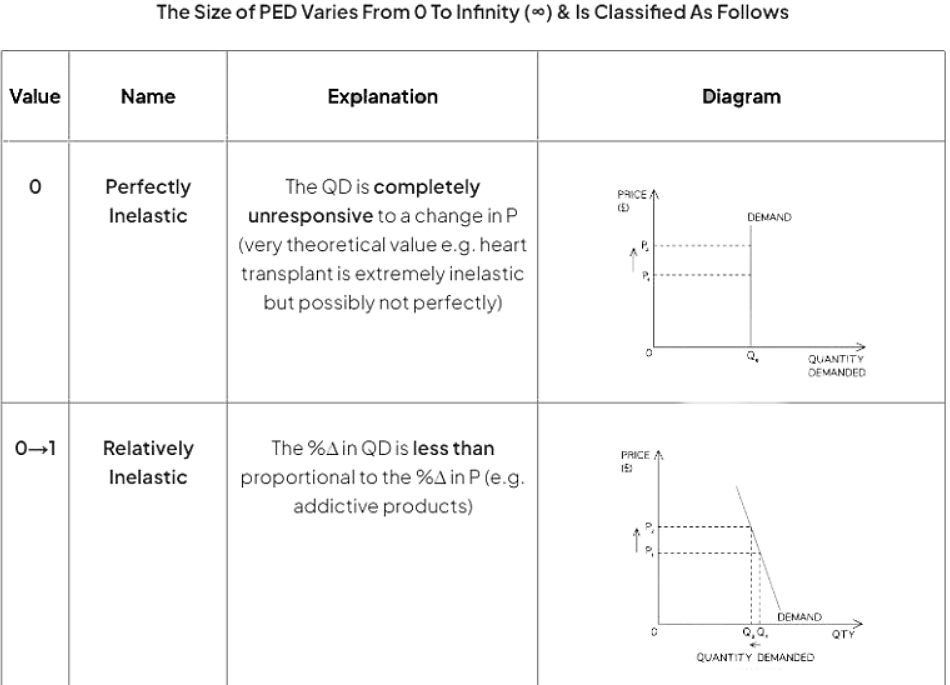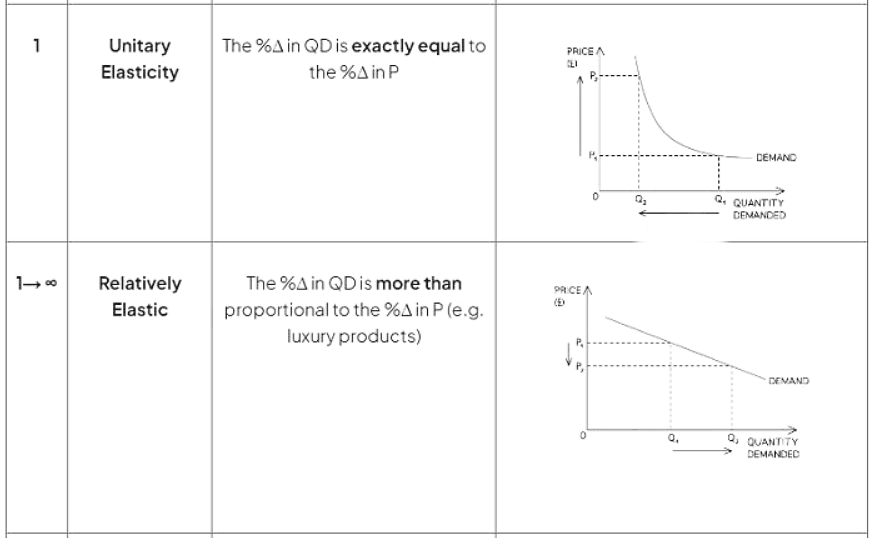Class 10 Exam > Class 10 Notes > Economics for GCSE/IGCSE > Calculation & Determinants of PED
Calculation & Determinants of PED | Economics for GCSE/IGCSE - Class 10 PDF Download
The Definition & Calculation of PED
- The principle of demand asserts that as prices rise, the amount demanded decreases.
- Economists focus on determining the extent of this decrease in quantity demanded.
- Price elasticity of demand measures the degree to which quantity demanded reacts to price fluctuations.
- This responsiveness varies across various product categories.
Calculation of PED
- To calculate a PED, utilize the following formula:

- To calculate a % change, use the following formula:

Interpreting PED Values



The Determinants of Price Elasticity of Demand (PED)
- Some products are more responsive to changes in prices than others.
- The factors that determine the responsiveness are known as the determinants of PED and include:
- Availability of Substitutes: When there are good substitute products available, the price elasticity of demand tends to be higher, making it relatively elastic. This means consumers are more likely to switch to alternatives if the price of the product increases.
- Addictiveness of the Product: Products that are highly addictive and considered essential or necessary have a low price elasticity of demand, making it relatively inelastic. Inelastic demand implies that consumers are less responsive to price changes.
- Price of Product as a Proportion of Income: If the price of a product represents a lower proportion of an individual's income, the price elasticity of demand will be lower. This leads to relatively inelastic demand, as consumers are less likely to adjust their purchasing behavior in response to price changes, especially for cheaper products.
- Time Period Consideration: In the short term, consumers typically exhibit less sensitivity to price changes, resulting in a low value of PED, indicating relatively inelastic demand. However, over a longer time horizon, consumers may become more responsive to price variations. If given sufficient time, consumers might seek out alternative products, leading to a higher value of PED, indicating relatively elastic demand.
Question for Calculation & Determinants of PEDTry yourself: What does price elasticity of demand (PED) measure?View Solution
The document Calculation & Determinants of PED | Economics for GCSE/IGCSE - Class 10 is a part of the Class 10 Course Economics for GCSE/IGCSE.
All you need of Class 10 at this link: Class 10
|
57 videos|110 docs|40 tests
|
FAQs on Calculation & Determinants of PED - Economics for GCSE/IGCSE - Class 10
| 1. What is the definition of Price Elasticity of Demand (PED) and how is it calculated? |  |
Ans. Price Elasticity of Demand (PED) measures the responsiveness of quantity demanded to a change in price. It is calculated as the percentage change in quantity demanded divided by the percentage change in price.
| 2. How do you interpret PED values in terms of demand elasticity? |  |
Ans. PED values less than 1 indicate inelastic demand, where quantity demanded changes less than proportionately to a change in price. PED values greater than 1 represent elastic demand, where quantity demanded changes more than proportionately to a change in price.
| 3. What are the determinants of Price Elasticity of Demand (PED)? |  |
Ans. The determinants of PED include the availability of substitutes, necessity of the good, proportion of income spent on the good, time period under consideration, and habit-forming nature of the good.
| 4. How can a firm use knowledge of PED to make pricing decisions? |  |
Ans. A firm can use PED to determine the optimal pricing strategy. For example, if a product has elastic demand, the firm may choose to lower prices to increase revenue. If demand is inelastic, the firm may choose to increase prices to maximize revenue.
| 5. What are some common misconceptions about Price Elasticity of Demand (PED)? |  |
Ans. One common misconception is that only luxury goods have elastic demand. In reality, the elasticity of demand can vary for all types of goods based on different factors such as substitutes and necessity.
Related Searches





















